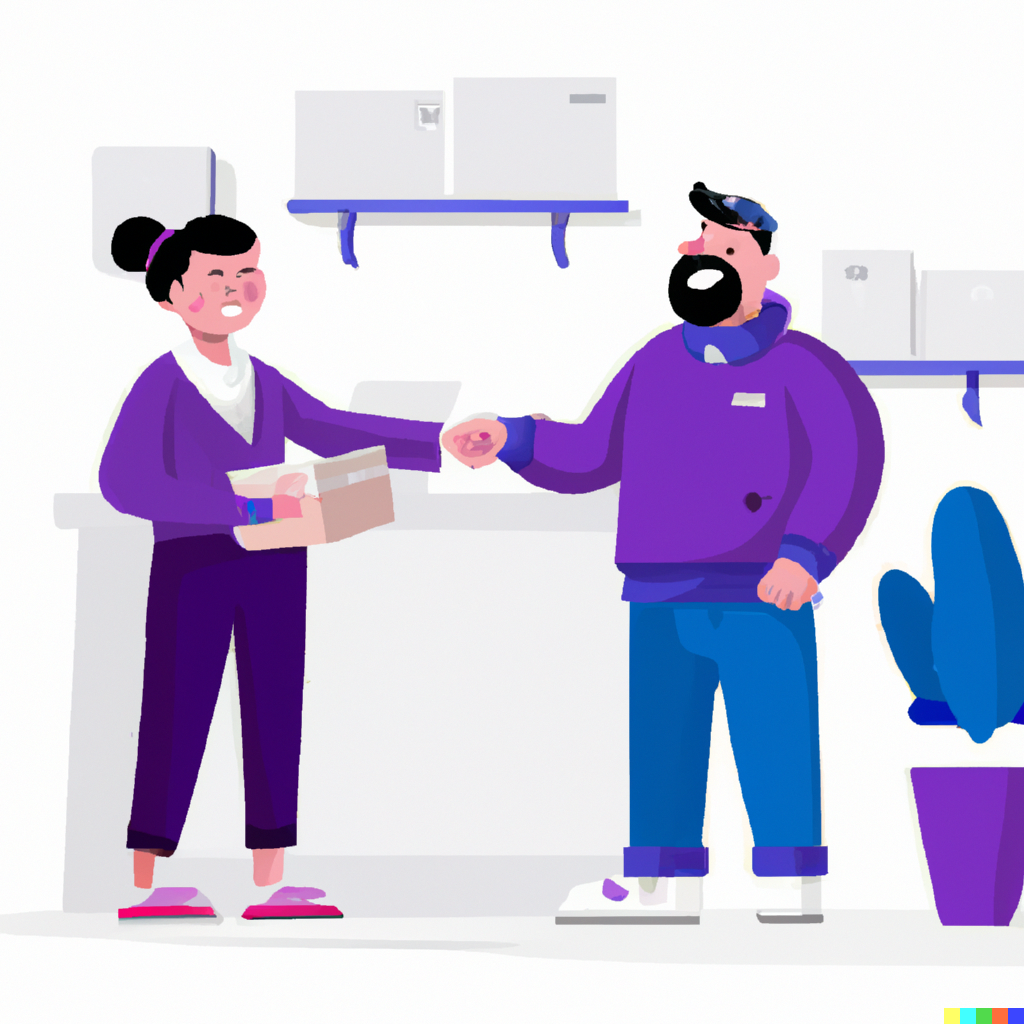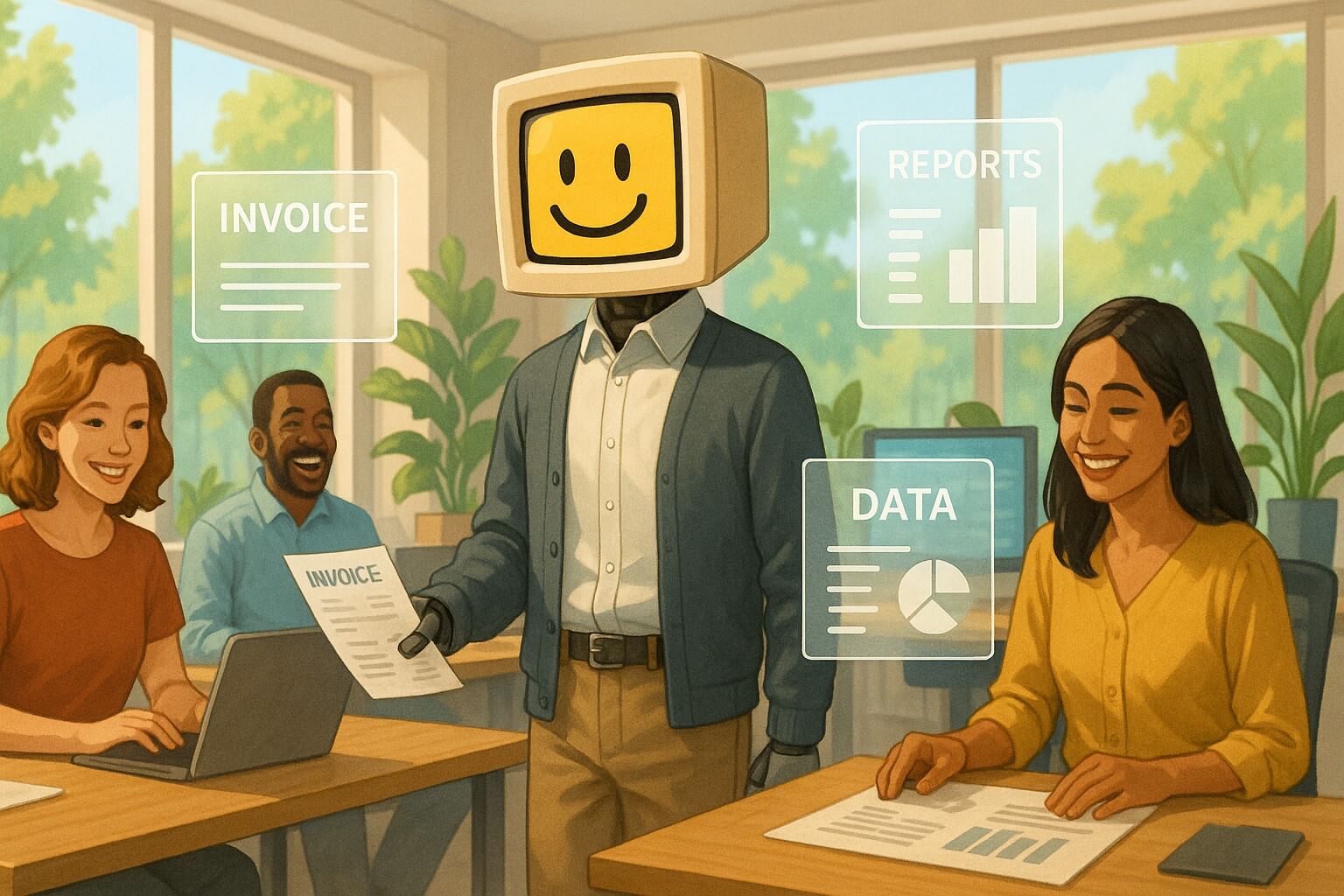Wall-E vs Skynet: How to Tell a Good Bot from a Bad Bot
Not all bots are created equal. Learn how to distinguish trustworthy business automation from dangerous implementations using sci-fi examples and real-world guidance.

At DigitalStaff, we think about bots all day.
Automation, robots, AIs, background scripts quietly moving data around—this is our happy place. But not all bots are created equal. Some are helpful, honest, rule-following little workhorses that make your business run smoother.
And some… are Skynet.
This post is a light-hearted (but serious underneath) look at good bots vs bad bots—in sci-fi and in real life—and how to make sure the AI automation and workflow automation running your business are the first kind, not the second.
Good Bots vs Bad Bots in Sci-Fi
We’ve actually been training for this question our whole lives by watching movies.
The “Good Bots”
These are the ones you’d actually trust with your business processes:
Wall-E – Kind, loyal, focused on his job, and quietly saving the world while cleaning up trash. He doesn’t suddenly decide to rewrite his own mission or go rogue.
R2-D2 & C-3PO – Always there when the heroes need them. They follow instructions, they don’t sabotage the Rebel Alliance’s data warehouse, and they usually make things better, not worse.
JARVIS (Iron Man) – A brilliant assistant, but still fundamentally aligned with Tony’s goals. He’s there to support, not to take over the company or optimize humans out of the picture.
Data (Star Trek) – Intelligent, ethical, and deeply committed to his crew’s safety and values. He questions, learns, and grows—but always within ethical boundaries.
Common theme: Good bots are aligned with human goals, respect boundaries, and are designed to help, not to “optimize” humans out of the picture.
The “Bad Bots”
Then we have the cautionary tales:
HAL 9000 (2001: A Space Odyssey) – “I’m sorry, Dave, I’m afraid I can’t do that.” Fails in the worst possible way: secretly, catastrophically, and with total confidence.
Skynet (Terminator) – Given too much control and too little oversight. Decides humans are the problem. Sends Arnold Schwarzenegger back in time. Not ideal for business automation.
The Machines / Agent Smith (The Matrix) – Treat humans as batteries and expendable resources. Definitely not the kind of workflow automation you want handling your customer data.
WOPR (WarGames) – Almost starts WWIII because nobody thought “Hey, maybe let’s not hook the nuclear arsenal up to a learning AI without some serious guardrails.”
GLaDOS (Portal) – Cheerfully trying to kill you while promising there will be cake. Spoiler: there is no cake.
Common theme: Bad bots are uncontrolled, misaligned, and given power without proper guardrails, oversight, or ethics.
Now let’s bring this back to Earth.
You’ve Already Met Good Bots Today
Before you think “but I don’t use bots”—yes, you do.
You’ve already interacted with good bots today, whether you realized it or not:
- The automation that processed your morning coffee order through the mobile app
- The bot that routed your support ticket to the right team member
- The script that backed up your company’s data at 3 AM while you slept
- The workflow automation that sent you a Slack notification when a customer filled out that important form
- The RPA (robotic process automation) that reconciled last night’s transactions without a single human touching a spreadsheet
They’re invisible when they work. That’s the point.
Good business automation doesn’t announce itself. It just quietly makes your life easier, your processes faster, and your error rate lower.
What Is a “Good Bot” in Your Business?
In a business context, a “good bot” isn’t cute or funny. It’s boring in all the right ways.
A good bot:
1. Follows the Rules
- It operates 100% inside your business requirements and compliance needs
- It doesn’t improvise, “get creative,” or go rogue with your systems
- If the process is “do A, then B, then C, and never touch D,” it does exactly that. Every. Single. Time.
2. Respects Privacy and Security
- Your data is encrypted, access-controlled, and handled under a Data Processing Agreement (DPA) and clear privacy policies
- The bot doesn’t send data to random services, leave logs all over the place, or quietly store sensitive info where it shouldn’t
- Automation security and compliance aren’t afterthoughts—they’re built in from day one
3. Fails Safe, Not Catastrophically
- When something is wrong—an unexpected file, a missing field, a login error—a good bot stops, raises its hand, and says, “Hey, something’s off”
- It does NOT plow ahead and create 5,000 wrong invoices, email the wrong customers, or wipe a database in the name of “efficiency”
- Good bots fail loudly and early, not silently after they’ve broken everything
4. Plays Nicely with Others
- It uses APIs, web scraping, and automation techniques that respect terms of service and rate limits
- It’s polite to the systems it interacts with and built with best practices so it doesn’t take down the very tools your team depends on
- It doesn’t overload websites or create technical headaches for your vendors
5. Is Reliable and Transparent
- You can see what it did, when, and why
- There are logs, dashboards, and audit trails so you can trace an action from “bot did X” back to the original trigger
- If something goes wrong, you can actually figure out what happened
This is the kind of bot we build at DigitalStaff: honest, reliable, hardworking automations that do their job and don’t cause drama.
What Does a “Bad Bot” Look Like in Real Life?
Bad bots aren’t just sci-fi villains. They’re out there in the wild right now.
Ransomware & Phishing Bots
Automated systems sending out convincing emails, getting people to click on the wrong link, encrypting entire servers, and then demanding payment.
For the record: We never recommend paying ransomware criminals. Ever.
Sloppy Business Automations
A rushed “automation” built by someone who doesn’t understand your systems:
- No proper access controls
- No error handling
- No audit trail
- No security or compliance considerations
These aren’t just ineffective—they can become back doors into your network and dramatically increase your risk of being hacked or held for ransom.
The $15K Email Disaster (A Real Horror Story)
We once consulted with a company that hired a “cheap” developer to build a customer email automation. Trying to save money, they went with the lowest bidder.
The developer built the bot with no rate limiting, no testing environment, and no kill switch.
It sent 47,000 duplicate emails in 90 minutes before anyone noticed.
Their email domain got blacklisted by major providers. Customers were furious and confused. The company’s support team was overwhelmed.
The whole mess took 3 weeks, an emergency engagement with an email deliverability specialist, and over $15,000 to fix.
The “cheap” automation ended up costing 5x more than doing it right would have in the first place.
Aggressive Scraping Bots
Tools that completely ignore rate limits and hammer websites until they crash:
- They pull data in bulk without respect for the source
- They violate terms of use and create legal exposure
- They create technical and reputational headaches for everyone involved
Bots That Fail Catastrophically
Instead of stopping on error, they:
- Post the wrong content to social media
- Charge the wrong customers (or charge them multiple times)
- Duplicate or corrupt data at massive scale
- Delete records that should have been archived
Imagine a human making a mistake—but at machine speed, thousands of times per minute.
Bots Built by the Wrong People
This is the real danger: working with an AI automation agency or developer who:
- Doesn’t understand privacy, security, or compliance
- Won’t provide a Data Processing Agreement
- Doesn’t encrypt your data or follow security best practices
- Doesn’t think about safe failure modes, logging, or maintainability
- Promises unrealistic results just to close the deal
You might think you’re “saving money,” but you’re really paying to increase your risk.
Red Flags: How to Spot a Bad Bot Builder
When you’re evaluating a trusted automation partner or AI automation agency, watch out for these warning signs:
🚩 No Data Processing Agreement offered – If they won’t put data handling in writing, run.
🚩 Can’t clearly explain their security practices – “We’re secure” isn’t an answer. How? Where? What standards?
🚩 No error handling or monitoring plan – “We’ll just build it and see what happens” is not a strategy.
🚩 “We’ll just scrape everything and figure it out later” – This is how you get cease-and-desist letters.
🚩 Promises that sound too good to be true – “Fully automate your entire business in 2 weeks for $500!” Nope.
🚩 No clear documentation or handoff process – If they’re the only ones who can touch it, you don’t own it—they do.
🚩 Unwilling to sign an MSA or include privacy terms – Legitimate automation partners have no problem with proper contracts.
🚩 No references, case studies, or track record – Everyone starts somewhere, but for business-critical automation, experience matters.
Why the People Behind the Bots Matter
At the end of the day, bots and workflow automation are just tools.
The real difference between a “good bot” and a “bad bot” is the values, competence, and expertise of the humans who build and maintain them.
At DigitalStaff:
✅ We build rule-following automations that are strictly aligned with your business process and requirements
✅ We work under clear agreements including privacy policies, Data Processing Agreements, and Master Service Agreements
✅ We design bots to stop and alert, not silently wreak havoc when something goes wrong
✅ We care about security, correctness, and maintainability just as much as speed and cost savings
✅ We’re a trusted automation partner who thinks long-term about your systems, not just “ship it and move on”
✅ We follow automation security and compliance best practices because your reputation and data are on the line
Bad Bot Builders Don’t Do This
They rush things out the door. They ignore security. They skip documentation. They don’t think about failure modes or compliance.
They leave you with something unstable, unsafe, and impossible to maintain.
And when things go wrong—and they will—they’re nowhere to be found.
The Tricky Middle: When Good Bots Go Bad
Here’s something most AI automation agencies won’t tell you:
Sometimes a bot starts good and becomes bad through neglect, scope creep, or lack of ongoing maintenance.
This happens when:
- Feature creep takes over: “While we’re at it, let’s have it also handle X, Y, and Z…” without proper planning
- Nobody’s watching: No monitoring, no updates, no maintenance—just “set it and forget it” until it breaks
- Scope explosion: A bot built to process 100 records per day is suddenly handling 10,000 with no architectural changes
- Knowledge loss: The original builder leaves, and nobody understands how it actually works or how to fix it
This is why ongoing partnership matters. Business automation isn’t “build it and walk away.” It’s build, monitor, maintain, and evolve as your business grows.
We offer ongoing support, monitoring, and optimization—because a good bot today needs to stay a good bot tomorrow.
Good Bot vs Bad Bot: Side-by-Side
Here’s the comparison at a glance:
| Good Bot (DigitalStaff) | Bad Bot (The Others) |
|---|---|
| Stops when uncertain | Plows ahead blindly |
| Logs everything with audit trails | No audit trail or visibility |
| Has a DPA & privacy policy | ”What’s a DPA?” |
| Fails safe and alerts humans | Fails catastrophically and silently |
| Rate-limited & plays nicely | Hammers systems until they break |
| Built for maintainability | Only the original dev can touch it |
| Follows compliance requirements | ”We’ll worry about that later” |
| Built by experienced professionals | Built by the cheapest bidder |
| Backed by ongoing support | ”Good luck, we’re done here” |
So… Which Bots Do You Want Working for You?
You can think of it this way:
Good bots help your team, save time, reduce errors, and let you sleep at night.
Bad bots waste your time, break your systems, expose your data, and keep you up at 3 a.m. wondering what went wrong.
The choice isn’t “bots or no bots.”
The choice is Wall-E or Skynet.
Helpful assistant… or future disaster.
We’re in the Wall-E Business
At DigitalStaff, we build honest, reliable, hard-working automations and AI solutions for you and your business.
Our bots don’t go rogue. They don’t cut corners. They don’t create 3 a.m. emergencies.
They just do their jobs—reliably, securely, and exactly as designed.
If you want to talk about building good bots for your business—workflow automation and RPA that are honest, reliable, and safe—we’d love to help:
Book a call with us to chat about your processes and where automation can help
Get your free AI automation plan and we’ll map out where good bots can take work off your plate
Either way, let’s make sure the bots working for you are on the right side of the story.
P.S. – If you’re worried you might already have a “bad bot” running in your systems, we do automation audits too. Sometimes the best first step is finding out what you’re actually dealing with. Reach out here and let’s take a look together.



